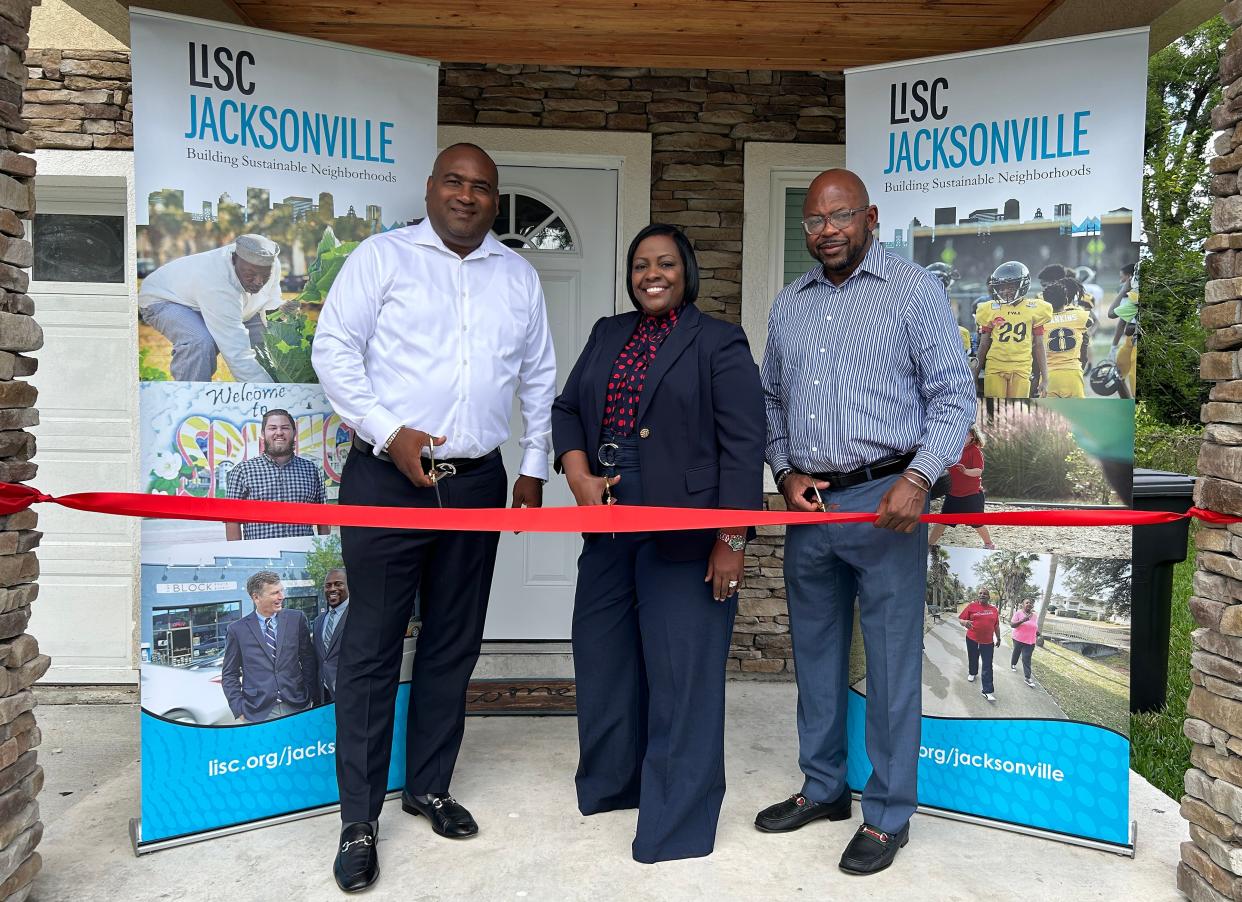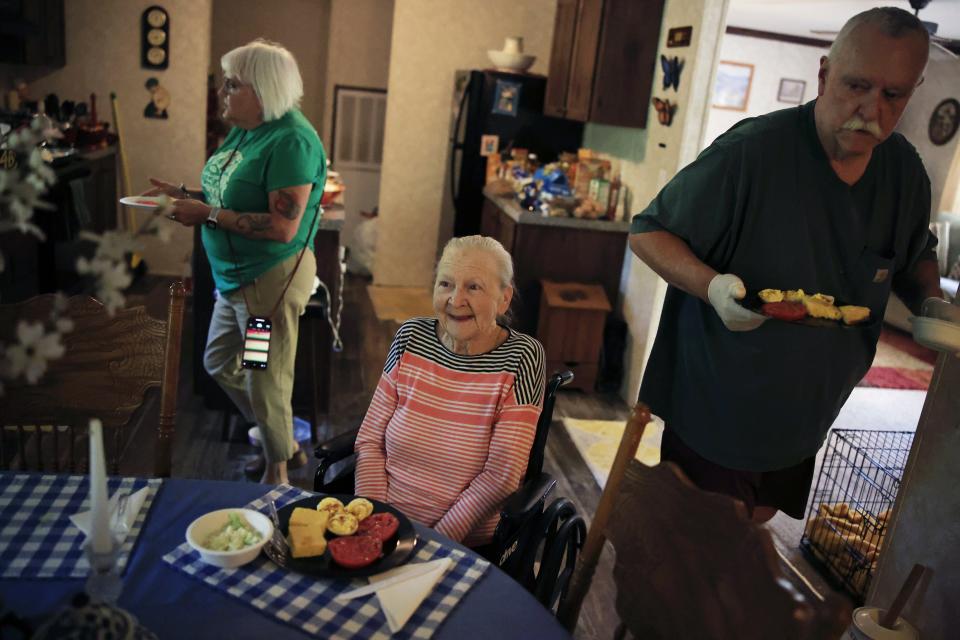'Struggling to keep up': As more come to Florida, nonprofits face supply demand gap

Northeast Florida has 1,832 nonprofits with 48,399 employees who provide a range of services from neighborhood revitalization to senior care.
Those nonprofits collectively generate $14.4 billion in revenue, a 28% increase since 2020, a higher bump than other Florida regions. But that's not enough for the job they have to do.
An estimated 1,200 people move to Florida every day, spreading themselves throughout the state, and the northeast region gets its fair share. Despite growth in the nonprofit sector, a statewide gap remains between demand from those new arrivals and current residents and how much nonprofits can help them, according to a new report from the Florida Nonprofit Alliance, a statewide advocacy organization.
"There is not enough investment in organizations that are most deeply connected to the people and communities that they serve," said Deirdre Conner, vice president of the Jacksonville-based Nonprofit Center of Northeast Florida.
Also compounding the missions of nonprofits are "economic uncertainty, the rising cost of providing services … without concurrent funding increases and the polarized political climate," as well as their ongoing recovery from the COVID-19 pandemic, she said.
Nonprofit survey: What shape are Florida nonprofits in compared to pre-pandemic times?
'Believe in the good that people can do' Jacksonville-based Nonprofit Center at 20 years
Why are nonprofits struggling to meet demand?
One key obstacle is the state being ranked 48th lowest in the nation for nonprofit revenue per 1,000 households, according to the alliance's 2023 Economic Impact of Florida’s Nonprofits report.
The report showed growth within the nonprofit sector since the 2020 report. But the low revenue-per-households ranking was "disheartening to see," said Sabeen Perwaiz, alliance president and CEO. "It shows how much work there is to do."
That work will include the alliance boosting its own advocacy efforts and helping its members advocate for themselves by, among other things, building relationships with potential funders. They need to "carefully articulate" their stories — about their human and economic impact — to educate local governments, foundations and private donors, she said.
That donor education must show nonprofits' actual needs, not only programs that help people but less inspiring office space, utility bills and livable staff wages, she said. "People don't like to fund overhead," she said. "We need a whole mindset shift."
"Florida is one of the fastest-growing populations in the nation and our infrastructure is struggling to keep up," Pervaiz said.
How big is Florida's nonprofit sector?
Statewide, Florida has 22,710 nonprofits with 456,800 employees. They pay annual wages of $27.5 million and collectively generate about $116 billion in revenue, about 10% higher now than in 2020.
In employment size, the nonprofit sector is 5% of the state workforce, compared to the construction and manufacturing industries at 6% and 4% respectively, according to the report. The largest nonprofit sub-sector is health care-related nonprofits at 43%, or 197,900 employees.
How 3 nonprofits cope
LISC Jacksonville is the local arm of Local Initiatives Support Corp., the nation’s largest community development organization. The nonprofit revitalizes and rebuilds urban neighborhoods — locally, Historic Eastside, Historic Springfield, Northwest Jacksonville, New Town Rail Yard District and Downtown Jacksonville — to act as economic catalysts for residents.
LISC Jacksonville among recipients: City's Eastside gets $2 million investment to revitalize
LISC Jacksonville has purposely limited its work to those urban-core communities, Executive Director Irvin "PeDro" Cohen said.
"By doing this we force ourselves to be very targeted, thus ensuring we don’t have mission creep," he said. "From a leadership perspective I am very clear, and I communicate the same level of clarity to my team, that we will not be able to eradicate poverty. However, if we can disrupt poverty’s impact, we will have accomplished our goal."
Seeing that goal take root in those communities inspires them to continue.
"It means everything because we have intentionally disrupted poverty, in some small aspect closed the wealth gap and intentionally made a community better," he said.
Pie in the Sky, which feeds St. Johns County seniors, sees supply fail to meet demand every day. About 27% more seniors are expected to be on the rolls this year than last, but donations are down by 52%, founder and Executive Director Malea Guriba said.

The gap is "pretty significant," she said. More revenue will be needed to keep up with demand, a 34% increase in produce costs and a 14% increase in federal poverty guidelines.
"We just can't see any relief, but when a senior calls, we deliver," she said. "Our policy is to never say no to a hungry senior. But it isn't always easy."
Kelly Moorman Coggins runs nonprofit Hart Felt Ministries, which enlists volunteers to help Jacksonville-area seniors. There are 25% more clients than a year ago and daily calls for help have almost doubled since then, she said, while revenue is lagging behind.
Most of her clients are on fixed incomes, which have been battered by inflation, and are also impacted by lack of affordable housing and rent increases for the accommodations they can find.
"We have already spent more helping seniors with just rent expenses than we spent on rent expenses all of last year," she said. "The bottom line is for us and the seniors who we serve there's absolutely not enough funding."
Overall nonprofit revenue is high, but ...
The state's nonprofit sector is seventh in the nation in revenue — total income minus expenses — but that ranking does not "show an accurate picture at the local level," Perwaiz said. The ranking for revenue per 1,000 households shows that "all 67 counties are not doing so well when you look at them one by one given the number of households there are."
The report breaks down revenue, assets and income by region, as well as the percentage change since the 2020 report. It also compares nonprofit data by region with the number of households that fall below the federal poverty threshold or meet the so-called ALICE threshold, a data-gathering method that stands for Asset Limited, Income Constrained, Employed.
'Not the American dream': 'Hard times hit 1 in 3 Jacksonville-area families
ALICE calculates the number of people who are working and earning more than the federal poverty level but still have difficulty making ends meet based on a minimal "survival budget." About 45% of households in Florida are below that threshold: in Northeast Florida, Putnam had the greatest need, with 63% of households below the threshold, according to the report.
"Nonprofits play an essential role in providing these households with essential services such as food, clothing, shelter and other needs," according to the alliance.
Who needs to step up?
Everyone needs to step up, said Tony Carvajal, alliance board chairman.
"It is important for policymakers, the business community and individual and corporate donors to recognize not only the economic strength and importance of the nonprofit sector, but also the gaps in our state that need to be filled," he said.
Community Foundation: Jacksonville to lose one of its nonprofit champions
Nonprofit Center of Northeast Florida: CEO retiring after years of championing causes
Mari Kuraishi, president of the Jessie Ball duPont Fund, a private Jacksonville-based foundation that supports many area initiatives, also reiterated what's needed.
"The solution is a question not just of more philanthropy, but also of more social entrepreneurship," she said. "We need motivated individuals and groups of individuals to step in and commit to try to meet needs and challenges. We need both, and I think the two forces can set off a virtuous cycle."
Kathleen Shaw, The Community Foundation for Northeast Florida's senior vice president for programs and initiatives, said nonprofits are "essential to Florida's economy." Supporting them provides an opportunity for "individuals to make a difference," she said.
"Their focus is on improving the quality of life for everyone in our communities, from filling the gap for essential needs like health care and healthy food, to enriching our lives through education, arts and social connections," she said. "A strong community relies on the public, private and nonprofit sectors working closely together, like the three legs of a stool."
bcravey@jacksonville.com, (904) 359-4109
NORTHEAST FLORIDA NONPROFITSPer county total nonprofits, employment, revenue
Baker County: 10; 446; $52,067,212
Clay County: 122; 1,475; $136,089,765
Duval County: 1,133; 37,125; $11,152,689,835
Flagler County: 86; 1,436; $349,613,725
Nassau County: 104; 1,043; $50,274,386
Putnam County: 52; 680; $65,073,624
St Johns County: 325; 6,194; $2,590,586,162
Regional Total: 1,832; 48,399; $14,396,394,709
Source: Florida Nonprofit Alliance
This article originally appeared on Florida Times-Union: Jacksonville-area nonprofits: Demand and funding gap significant

